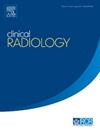Reduction of radiation dose and contrast medium volume in computed tomography pulmonary angiography: adaptation of dual-energy computed tomography (CT) protocols to the body mass index
IF 2.1
3区 医学
Q2 RADIOLOGY, NUCLEAR MEDICINE & MEDICAL IMAGING
引用次数: 0
Abstract
Aim
To evaluate the image quality and diagnostic value of a body mass index (BMI)-based dual-energy computed tomography (CT) protocol in computed tomography pulmonary angiography (CTPA) for reduction of radiation dose and contrast medium (CM) volume.
Materials and Methods
Patients suspected of having pulmonary embolism were prospectively included and randomly assigned to one of three protocols: Protocol A (a standard protocol, 100 kV/140 mAs/50 mL iodinated CM), B (a conventional dual-energy protocol, 80–140 kV switching/automatic tube current/weight-dependent CM volume) and C (a BMI-based dual-energy protocol, 80–140 kV switching/BMI-based tube current/weight-dependent CM volume, BMI-based CM injection rate). Subjective and objective image analysis were performed by two radiologists independently. Diagnostic accuracy of pulmonary embolism were evaluated. Inter-group comparison was performed.
Results
Ninety patients (mean age 54.1 ± 13.3 years, 57 men) were included, with 30 patients in each group. The CT values, signal-to-noise ratio (SNR), and contrast-to-noise ratio (CNR) of the pulmonary arteries in group C were significantly higher than those in group B (358.2 ± 50.5 vs 324.9 ± 57.2, p=0.047, 17.8 ± 3.2 vs 15.3 ± 2.9, p=0.010, 19.2 ± 4.1 vs 15.7 ± 3.8, p=0.014). The dose length product (DLP) and CM volume were significantly reduced in groups B and C (A vs B vs C, DLP, 287.9 ± 34.0 vs 177.2 ± 39.2 vs 183.8 ± 23.1 mGy·cm), p<0.001, CM, 50.0 ± 0.0 vs 22.1 ± 3.0 vs 23.2 ± 4.0 ml, p<0.001). There were no significant differences in diagnostic accuracy or subjective image quality among the three groups.
Conclusion
The BMI-based dual-energy CT protocol can reduce radiation exposure and iodine burden compared to routine CTPA without affecting the image quality and diagnostic accuracy in patients with a BMI under 30 kg/m2.
计算机断层肺血管造影中降低辐射剂量和造影剂体积:双能计算机断层扫描(CT)方案对身体质量指数的适应
目的评价基于身体质量指数(BMI)的双能计算机断层扫描(CT)方案在计算机断层肺血管造影(CTPA)中减少辐射剂量和造影剂(CM)体积的图像质量和诊断价值。材料和方法前瞻性纳入疑似肺栓塞的患者,并随机分配到三个方案中的一个:方案A(标准方案,100 kV/140 mAs/50 mL碘化CM), B(常规双能方案,80-140 kV开关/自动管电流/体重依赖CM体积)和C(基于bmi的双能方案,80-140 kV开关/基于bmi的管电流/体重依赖CM体积,基于bmi的CM注射速率)。主客观影像分析由两名放射科医师独立完成。评价肺栓塞诊断的准确性。进行组间比较。结果纳入90例患者,平均年龄54.1±13.3岁,男性57例,每组30例。C组肺动脉CT值、信噪比(SNR)、比噪比(CNR)均显著高于B组(358.2±50.5 vs 324.9±57.2,p=0.047, 17.8±3.2 vs 15.3±2.9,p=0.010, 19.2±4.1 vs 15.7±3.8,p=0.014)。B组和C组剂量长度积(DLP)和CM体积显著降低(A组比B组比C组,DLP, 287.9±34.0 vs 177.2±39.2 vs 183.8±23.1 mGy·CM), p<0.001, CM, 50.0±0.0 vs 22.1±3.0 vs 23.2±4.0 ml, p<0.001)。三组患者在诊断准确性和主观影像质量上无显著差异。结论与常规CTPA相比,基于BMI的双能CT方案可在不影响BMI < 30 kg/m2患者图像质量和诊断准确性的情况下减少辐射暴露和碘负担。
本文章由计算机程序翻译,如有差异,请以英文原文为准。
求助全文
约1分钟内获得全文
求助全文
来源期刊

Clinical radiology
医学-核医学
CiteScore
4.70
自引率
3.80%
发文量
528
审稿时长
76 days
期刊介绍:
Clinical Radiology is published by Elsevier on behalf of The Royal College of Radiologists. Clinical Radiology is an International Journal bringing you original research, editorials and review articles on all aspects of diagnostic imaging, including:
• Computed tomography
• Magnetic resonance imaging
• Ultrasonography
• Digital radiology
• Interventional radiology
• Radiography
• Nuclear medicine
Papers on radiological protection, quality assurance, audit in radiology and matters relating to radiological training and education are also included. In addition, each issue contains correspondence, book reviews and notices of forthcoming events.
 求助内容:
求助内容: 应助结果提醒方式:
应助结果提醒方式:


